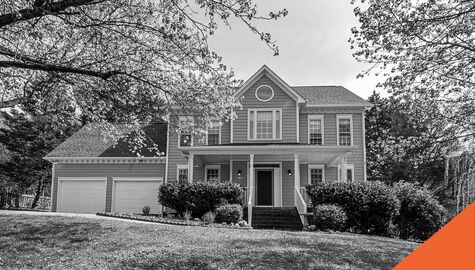Understanding Liability Insurance for Slip and Fall Incidents: Protecting Yourself This Winter
Wednesday, 18 December 2024
As the winter months roll in, snow and ice accumulation transform sidewalks, driveways, and pathways into potential hazards. Slip and fall incidents are among the most common accidents during this season, leading to injuries that can range from minor bruises to serious medical emergencies. For homeowners, liability insurance for these incidents is crucial.
With the risk of accidents increasing this time of the year, it's important to understand how liability insurance can provide coverage and safeguard against potential claims. In this blog, we'll break down what slip and fall incidents are, how to prevent them, and how your property insurance can help protect you if the worst happens.
What Are Slip and Fall Incidents?
A slip and fall occurs when a person loses their footing on a slippery or uneven surface, often resulting in injuries. These accidents are commonly caused by:
- Snow and ice accumulation
- Wet or greasy floors
- Poor lighting
- Uneven or damaged walking surfaces
In the context of winter, icy pathways and improperly cleared areas are the primary culprits. However, indoor spaces can also pose risks, especially when floors are wet or slippery and lack anti-slip mats or mats at entrances. When such incidents happen on your property, liability concerns arise.
Who is Responsible for Snow and Ice Removal?
This responsibility is typically placed on the property owner. If you own a home, you must take the proper steps to ensure snow and ice are cleared from any walkways on your property. That said, there are some instances where this can be deferred to other parties. Take rental properties in Ontario, for example. In these scenarios, snow and ice removal will usually need to be completed by the landlord. However, a contract between the landlord and tenants can be drafted to place responsibility on the renters. This will need to be a separate document from the rental agreement.
Alternatively, landlords can hire a third party to manage snow and ice removal, ensuring compliance and reducing risk. Whether a tenant or third party takes on this task, it is important to have a contract that outlines specific requirements to ensure snow and ice removal is tended to promptly. This includes a description of what services will be performed, when they are to be completed, the method(s) that will be used, and how these services will be paid for.
Does Home Insurance Cover Slip and Fall Incidents?
In most cases, a standard homeowners insurance policy will include liability coverage if you are found legally responsible for someone sustaining an injury on your property. This can help pay for legal fees and the cost of medical expenses, loss of wages, and settlements for damages a third party incurs while on your premises. So, if someone were to slip and fall on your driveway, sidewalk, front steps, or even a wet floor inside your home, your policy can prevent you from having to pay for these expenses out of your own pocket and avoid financial hardship.
For those who are renting out a home or apartment, ensuring you have tenant insurance is a must. While your landlord might be responsible for removing any hazards outside of the dwelling, you could be found liable if a guest is injured following a slip and fall incident while visiting your home. Securing a tenant insurance policy will provide similar coverage to home insurance, giving you peace of mind and protection from the unexpected.
Winter Safety Tips to Prevent Slip and Fall Incidents
Taking proactive measures to reduce the risk of a slip and fall injury can protect both you and visitors to your property. Here are some practical steps to consider:
- Clear Snow and Ice Regularly: Shovel driveways and sidewalks promptly after snowfalls. Apply salt or sand to melt ice and improve traction.
- Use Proper Lighting: Ensure outdoor areas, including entryways and pathways, are well-lit to help people see potential hazards.
- Repair Damaged Surfaces: Fix cracks, potholes, or uneven pavement before winter sets in.
- Maintain Walkways Indoors: For shared residential spaces, ensure that the floors inside are kept dry and free of debris. Place anti-slip mats near entrances for shoes to dry and prevent water from tracking in the house.
- Use Proper Footwear: Encourage visitors or tenants to wear appropriate footwear for winter conditions, especially when walking on icy or snowy surfaces.
- Check for Hidden Hazards: Regularly inspect your property for hidden dangers like black ice, which can be nearly invisible but extremely slippery. Be especially mindful of areas like ramps, stairways, and areas around entrances.
- Create a Snow Removal Schedule: Set up a consistent snow removal plan that includes frequent checks after snowfalls and freezing temperatures. This will ensure that walkways are kept clear, reducing the risk of accidents.
Stay Protected This Winter With Help From BIG
As winter brings its unique challenges, understanding your insurance coverage becomes more critical than ever. Slip and fall incidents can happen in an instant, and ensuring you have the right liability protection can make all the difference in safeguarding your financial future. Whether you're a homeowner or tenant, proactive measures and the right insurance coverage can help you navigate this slippery season with confidence.
At Billyard Insurance Group, our brokers are here to answer your questions, review your coverage, and help you find the policy that best suits your needs. Contact us today or request a quote to learn more about how we can help protect you this winter!



